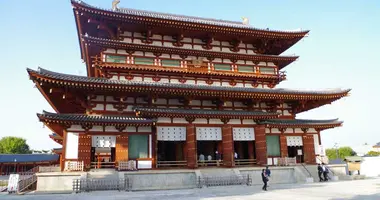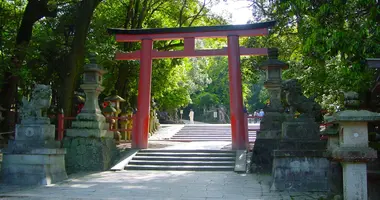Asuka-dera temple 飛鳥寺
Asuka-dera, Japan of ancient times
Asuka was the capital of the country in the Yamato period, when Japan first discovered writing and Buddhism, whose introduction into Japan led to a clash between the great feudal clans. It was during this time that the temple of Asuka-dera, one of the oldest temples in Japan, was born. Follow the footsteps of early Japanese Buddhism...
The first temple of Japan
The Temple of Asuka-dera was built in 588 by the sessho and kampaku (regent) Soga no Umako, the Soga clan, the most powerful clan of Japan in 6th and 7th centuries. Originally called "Hoko-ji", it was built following the introduction of Buddhism to Japan by monks from the Korean kingdoms (Buddhism became a state religion in 592). It was artisans from the Korean kingdom of Baekje (Kudara in Japanese) who led the construction of the temple, using the architectural techniques of the continent before spreading across Japan Buddhist architecture.
Related : Buddhism in Japan
The original temple was much larger than what currently exists today, including a 5-storey pagoda in the center of the complex. The buildings were moved following the transfer of the capital from Asuka to Nara, a move that took place in 718 and gave birth to Gango-ji. The current site has suffered a lot of damage over time due to fires and earthquakes. The one that can be visited today is a reconstruction dating back to the Edo period (1603-1868).
The Great Buddha
The main hall and the courtyard of the ancient temple remain, and so does a 4.85-meter bronze Buddha statue made by the genius of Buddhist sculpture Kuratsukuri no Tori, nicknamed Tori Busshi (meaning "the maker of Buddhist images"). He was the favorite sculptor of the two powerful men of the time, Soga no Umako and Prince Shotoku.
The statue of the Buddha has suffered the trauma of time, especially because of the fires, but part of the face, the right ear and three fingers of the right hand are remnants of the original creation of 606. It has been inscribed on the official list of "Important Cultural Property" of Japan. Weighing 15 tons, it is one of the oldest existing Japanese Buddha statues.
For those seeking a special time to discover the temple, the bell of the main hall is rung 108 times at midnight on New Year, while ginger tea is distributed to the faithful.
Come and admire the very old Buddha!
Read also : Buddhist statues in Japan
























